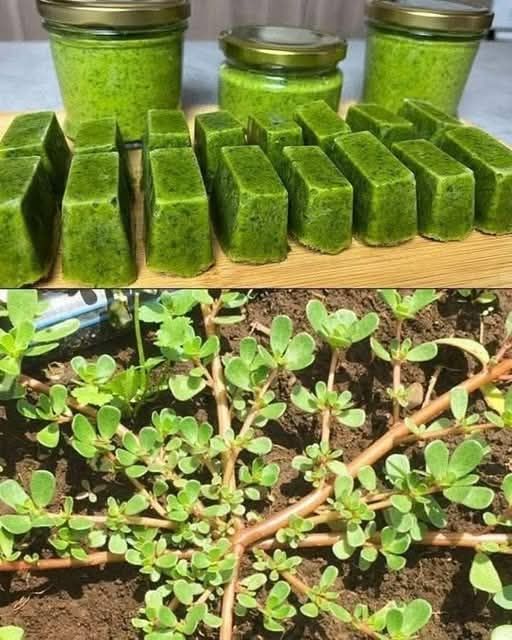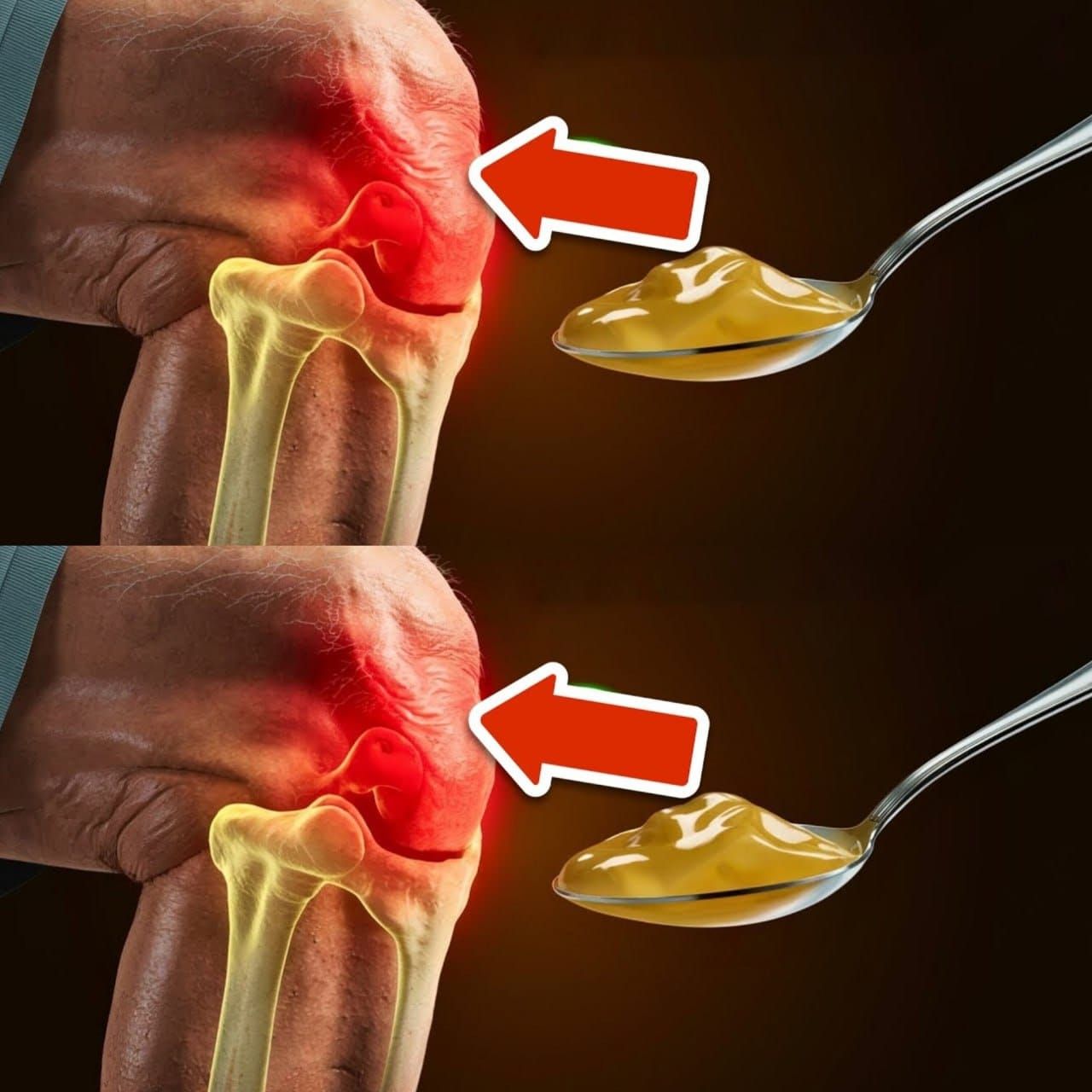Purslane is a versatile, nutrient-dense green that offers a multitude of health benefits and culinary possibilities. While often dismissed as a weed, it is a gem of nature that deserves to be cultivated and embraced in your garden. Purslane (Portulaca oleracea), a succulent plant native to various regions of the world, has been celebrated for its exceptional health benefits and culinary potential for centuries.
Widely regarded as a weed in many parts of the world, purslane is, in fact, a nutritional powerhouse, packed with essential vitamins, minerals, and other valuable compounds. It is commonly found in gardens, lawns, and even cracks in sidewalks, but it is much more than just an unwanted plant. Purslane has a long history of being used as food and medicine, and it’s about time it gets the recognition it deserves.
In this article, we will delve into the numerous health benefits of purslane, discuss its culinary potential, and explore why you should reconsider killing it in your garden. If you’re a gardening enthusiast or someone looking to boost your health through natural and accessible means, purslane is a green you won’t want to overlook.
1. A Nutrient-Dense Superfood
One of the most compelling reasons to keep purslane in your garden is its impressive nutrient profile. Purslane is brimming with essential nutrients, making it an excellent choice for anyone looking to improve their overall health naturally. This green is packed with vitamins A, C, and E, which are essential for maintaining healthy skin, immune function, and eye health. Additionally, it contains a variety of B vitamins, including folate, which is crucial for proper cell function and overall well-being.
Beyond vitamins, purslane is rich in minerals such as magnesium, potassium, and calcium, which are necessary for heart health, bone strength, and muscle function. With its impressive nutrient density, purslane is a great way to incorporate more vitamins and minerals into your diet without adding many calories.
2. Rich in Omega-3 Fatty Acids
While most people associate omega-3 fatty acids with fish, purslane is one of the few leafy greens that contain a significant amount of alpha-linolenic acid (ALA), a type of omega-3 fatty acid. Omega-3s are essential fats that play a vital role in maintaining heart health, reducing inflammation, and supporting brain function.
Purslane’s omega-3 content is a particularly valuable feature, as many people do not consume enough of these essential fats. Incorporating purslane into your diet can help you achieve a healthy balance of omega-3s and contribute to reducing the risk of chronic diseases such as cardiovascular disease and arthritis.
3. Packed with Antioxidants
Antioxidants are compounds that protect your body from oxidative stress and help fight off harmful free radicals that can contribute to the development of chronic diseases. Purslane is rich in antioxidants, particularly betalain pigments, which give the plant its vibrant color. These antioxidants help protect the body from cellular damage, reduce inflammation, and may even help slow down the aging process.
By including purslane in your garden, you’re essentially growing a plant that acts as a natural defense mechanism against oxidative stress. Its antioxidants work to protect your cells from damage caused by pollution, toxins, and environmental stressors. Regular consumption of purslane can contribute to a healthier, more resilient body.
4. Anti-Inflammatory Properties
Chronic inflammation is linked to a wide range of health problems, including arthritis, heart disease, and diabetes. Purslane’s omega-3 fatty acids and antioxidants work synergistically to provide powerful anti-inflammatory benefits. The high concentration of alpha-linolenic acid (ALA) helps reduce inflammation in the body, making it beneficial for individuals suffering from conditions like arthritis, joint pain, and even inflammatory bowel disease.
Adding purslane to your diet can help support your body’s natural ability to fight inflammation and promote overall well-being. Whether consumed fresh or cooked, purslane offers a natural way to combat chronic inflammation without the need for pharmaceutical interventions.
5. Aiding in Weight Management
Purslane is a low-calorie green that is packed with fiber, making it an excellent addition to any weight management plan. Fiber helps to promote feelings of fullness, which can prevent overeating and unnecessary snacking. Purslane’s high fiber content also supports healthy digestion, making it an ideal food for those looking to maintain a healthy gut and prevent issues like constipation.
Incorporating purslane into your meals can help you feel satisfied while providing essential nutrients, all while keeping your calorie intake low. It’s a win-win for anyone looking to manage their weight and maintain a balanced diet.
6. Promoting Heart Health
The combination of omega-3 fatty acids, antioxidants, and essential minerals in purslane makes it an excellent food for supporting cardiovascular health. Omega-3s are known for their ability to lower blood pressure, reduce cholesterol levels, and prevent the buildup of plaque in the arteries. The antioxidants in purslane also work to protect the heart from oxidative stress and reduce the risk of heart disease.
Including purslane in your diet is a heart-healthy choice that can support long-term cardiovascular well-being. Whether you consume it as part of a salad, a stir-fry, or a smoothie, purslane provides heart-healthy nutrients that benefit your entire body.
7. Immune System Support
Vitamin C is essential for maintaining a healthy immune system, and purslane is a rich source of this vital nutrient. Vitamin C helps to strengthen the immune system, making it easier for your body to fight off infections and illnesses. Purslane’s vitamin C content is particularly valuable during cold and flu season, as it can help boost your body’s natural defenses.
In addition to vitamin C, purslane also contains other compounds that support immune health, such as antioxidants and anti-inflammatory agents. Regular consumption of purslane can help ensure that your immune system remains strong and ready to ward off infections.
Delicious Purslane Recipes
Now that you’re convinced of the many health benefits of purslane, why not start incorporating it into your meals? Here are some delicious recipes that showcase purslane’s unique flavor and versatility.
Purslane and Tomato Salad
Ingredients:
- 2 cups fresh purslane leaves
- 2 cups cherry tomatoes, halved
- 1/4 cup red onion, thinly sliced
- 2 tablespoons extra-virgin olive oil
- 2 tablespoons balsamic vinegar
- Salt and pepper to taste
Instructions:
- Wash and dry purslane leaves thoroughly.
- In a large bowl, combine purslane, cherry tomatoes, and red onion.
- In a small bowl, whisk together olive oil, balsamic vinegar, salt, and pepper.
- Drizzle the dressing over the salad and toss to combine. Serve chilled.
Purslane and Chickpea Stir-Fry
Ingredients:
- 2 cups fresh purslane leaves
- 1 can (15 oz) chickpeas, drained and rinsed
- 1 red bell pepper, thinly sliced
- 1 small onion, finely chopped
- 2 cloves garlic, minced
- 1 tablespoon soy sauce
- 1 teaspoon sesame oil
- 1/2 teaspoon red pepper flakes (optional)
Instructions:
- Heat oil in a skillet or wok over medium-high heat.
- Add the onion and bell pepper; stir-fry for 3-4 minutes until slightly softened.
- Add the garlic and stir for another minute.
- Add chickpeas and purslane, stir-frying for 2-3 minutes until purslane wilts.
- Drizzle with soy sauce and sesame oil, and add red pepper flakes if desired.
- Toss well and cook for another 2 minutes. Serve hot.
Purslane and Feta Stuffed Pita
Ingredients:
- 1 cup fresh purslane leaves
- 1/2 cup crumbled feta cheese
- 2 tablespoons Kalamata olives, pitted and sliced
- 2 whole-grain pita bread rounds
- 2 tablespoons Greek yogurt (optional)
Instructions:
- Wash and pat dry the purslane leaves.
- Cut pita rounds in half to create pockets.
- Fill each pita half with purslane leaves, crumbled feta, and Kalamata olives.
- Optionally, drizzle with Greek yogurt for added creaminess.
- Serve as a delicious and healthy sandwich.
Purslane is a versatile, nutrient-dense green that offers a multitude of health benefits and culinary possibilities. Whether you use it in salads, stir-fries, or stuffed in pita pockets, purslane adds a unique flavor and a burst of nutrition to your dishes. By incorporating purslane into your diet, you can relish its delightful taste while reaping its numerous health-enhancing advantages.
Don’t overlook this unsung hero in the world of leafy greens; give purslane a chance to shine in your kitchen and on your plate. Not only does it contribute to a healthier lifestyle, but it also enriches your garden with a plant that is both resilient and incredibly beneficial. So, the next time you spot purslane growing in your garden, remember: it’s not a weed, it’s a superfood waiting to be harvested.





